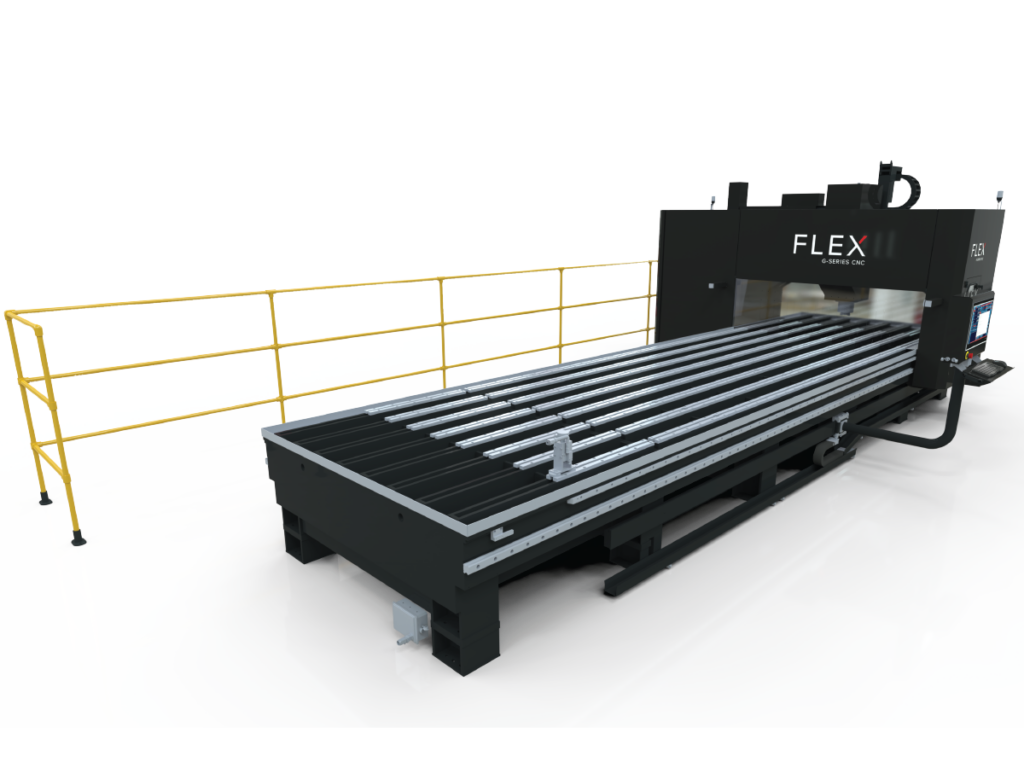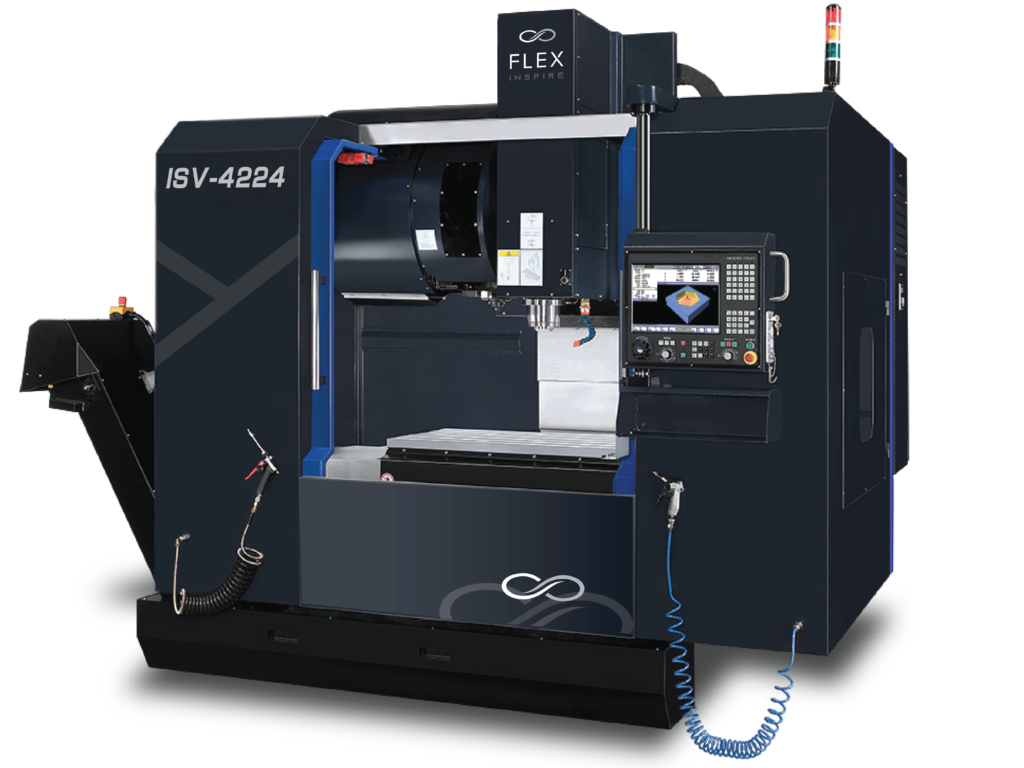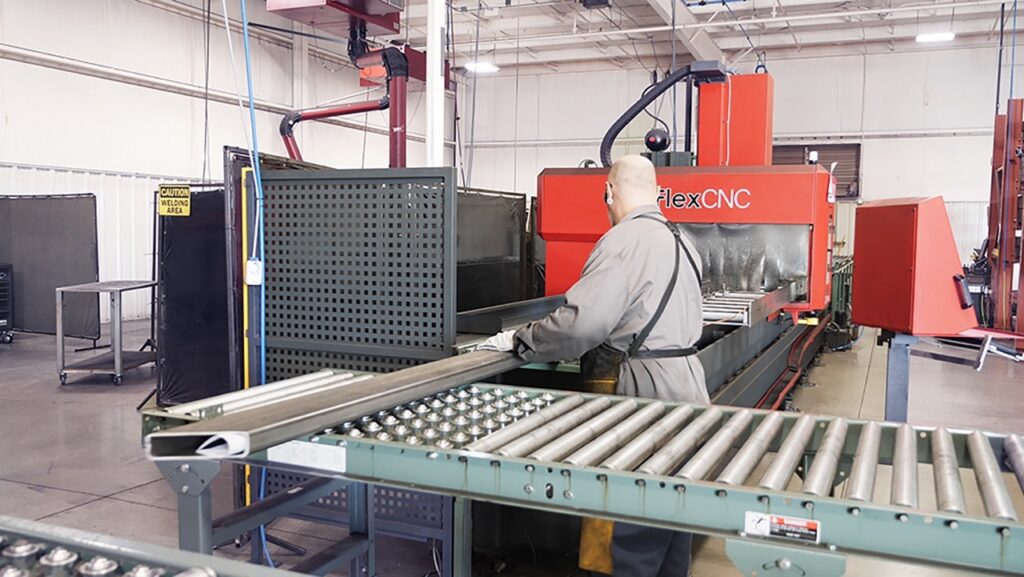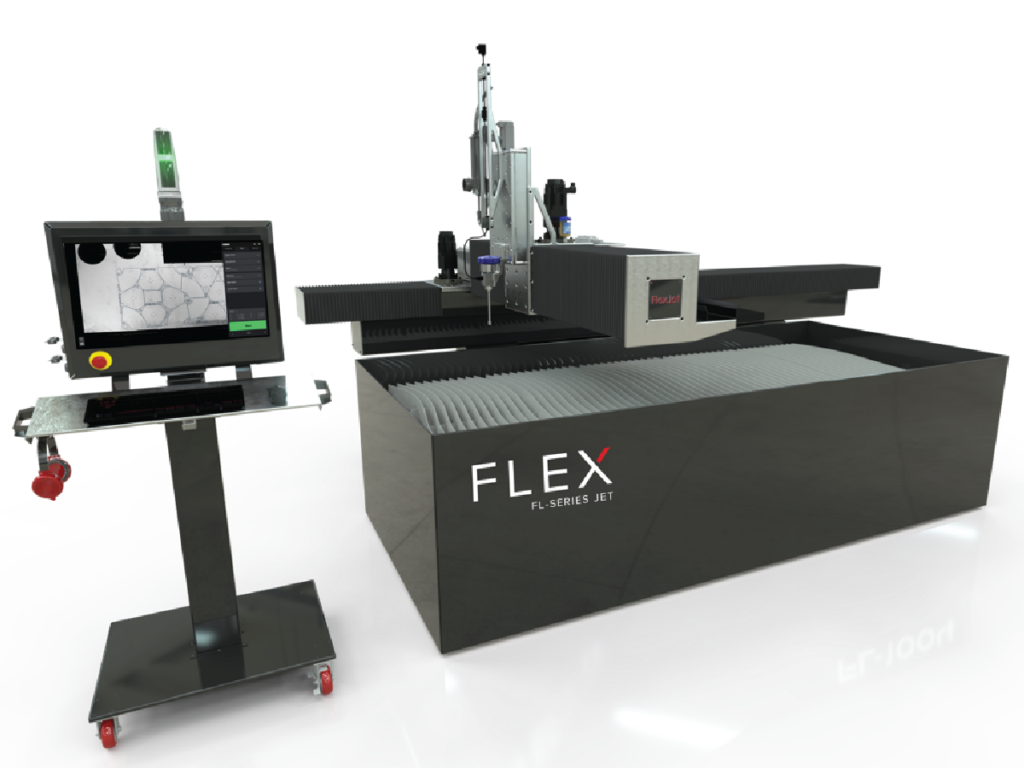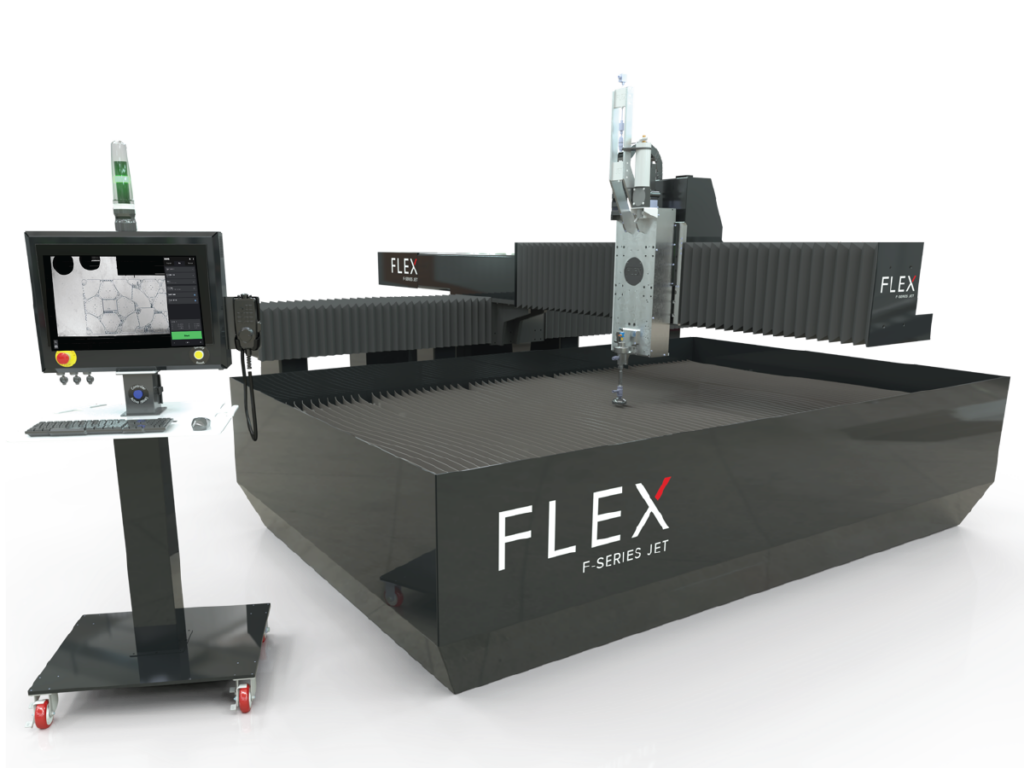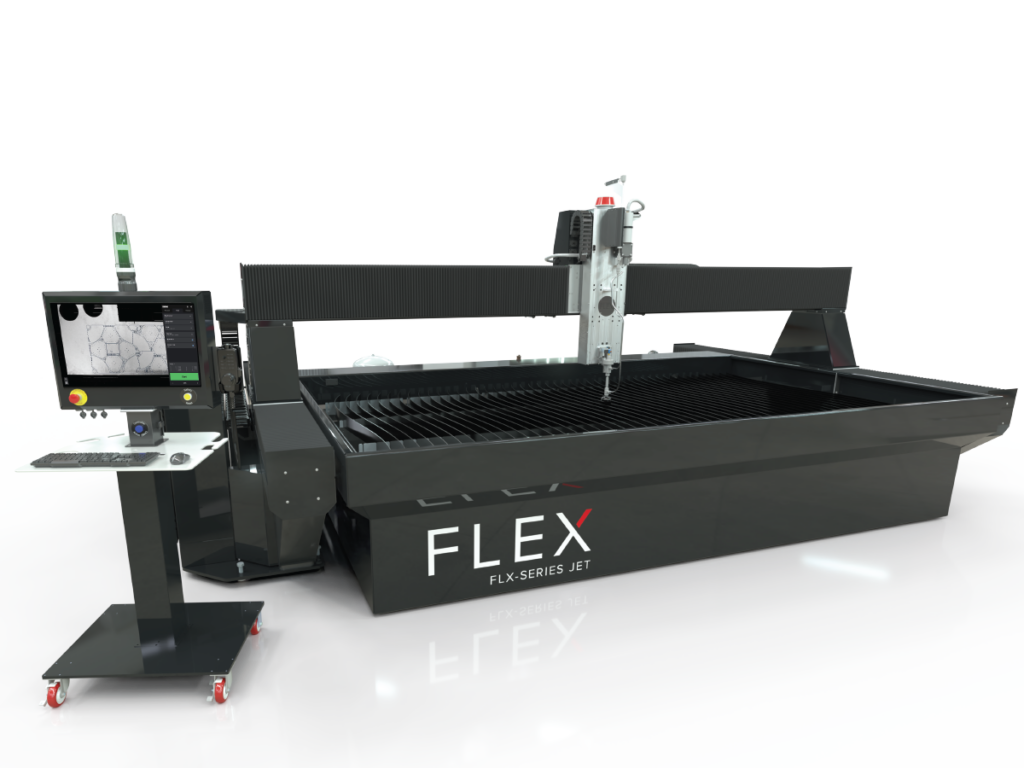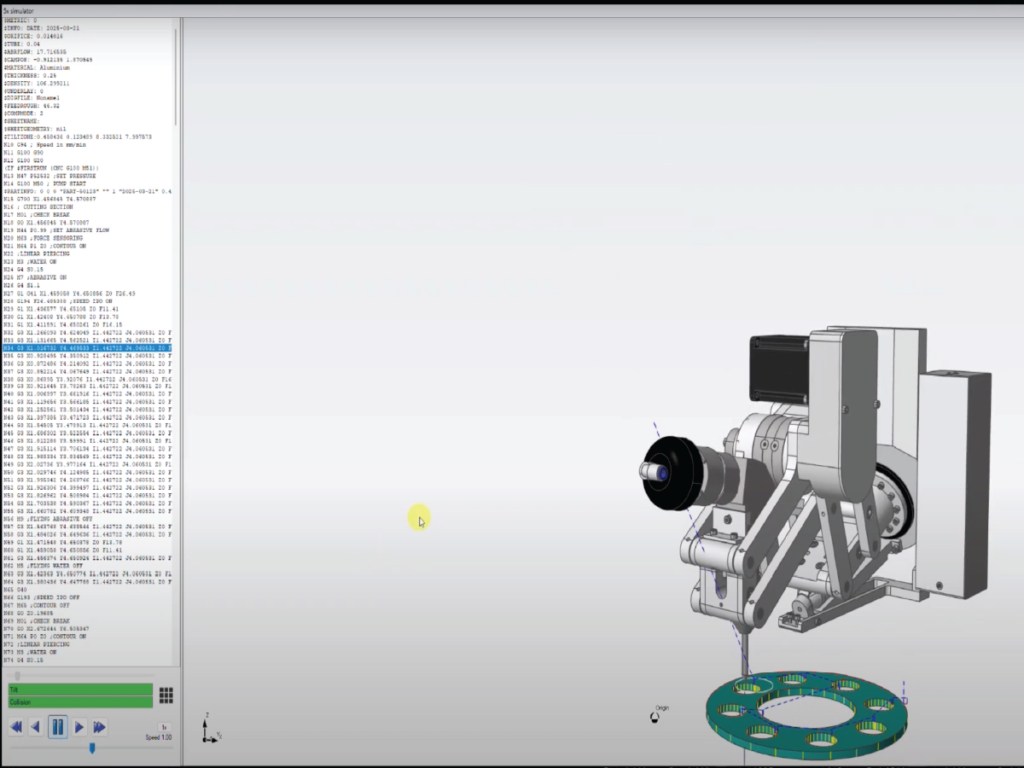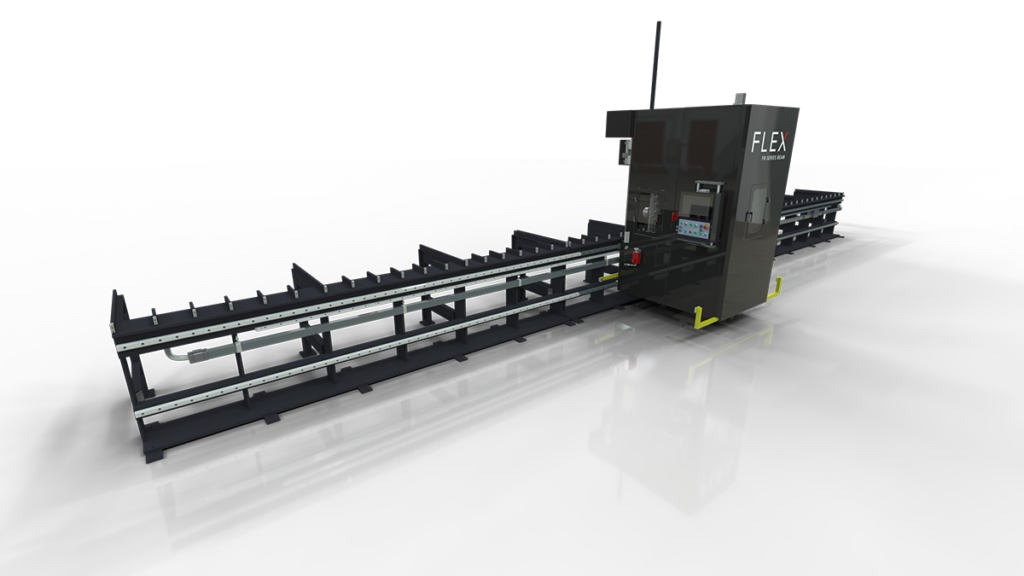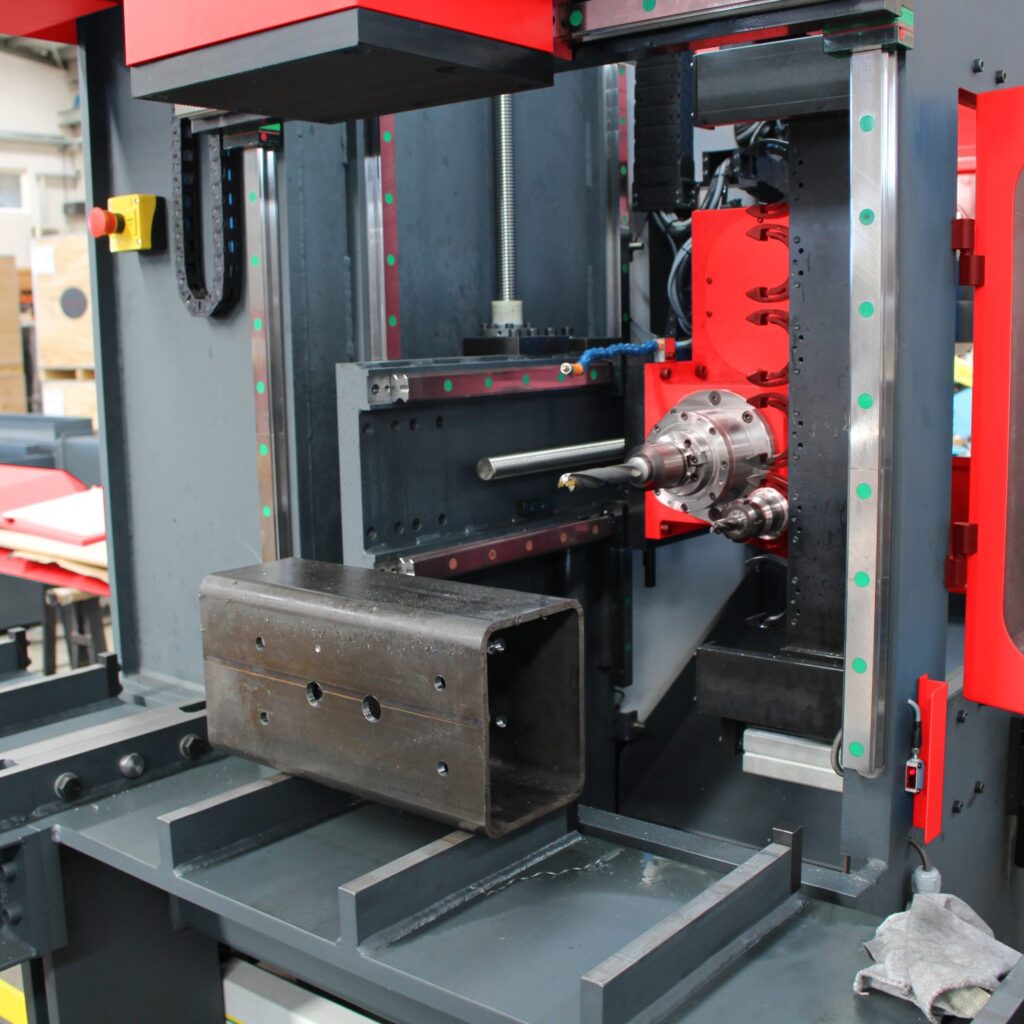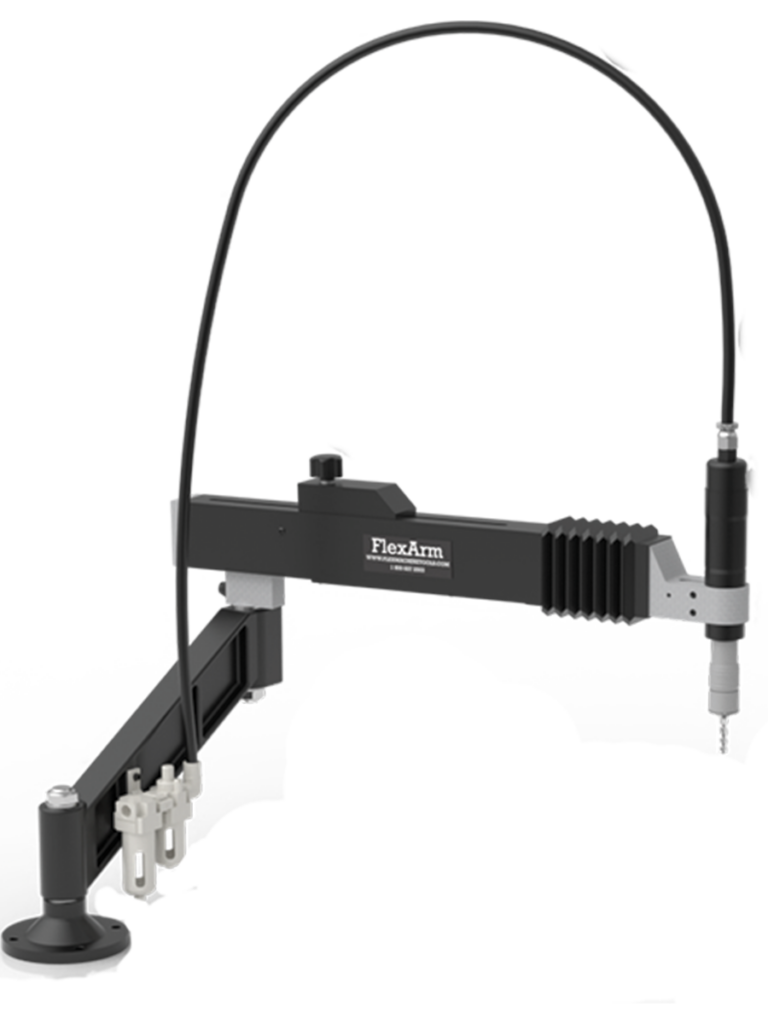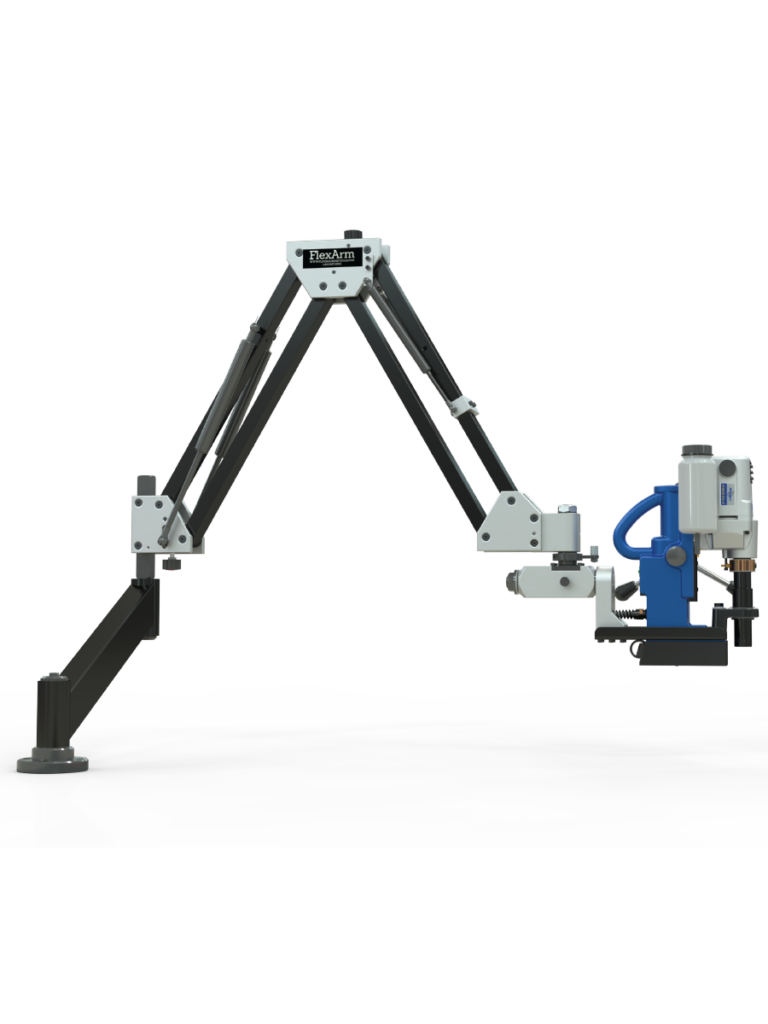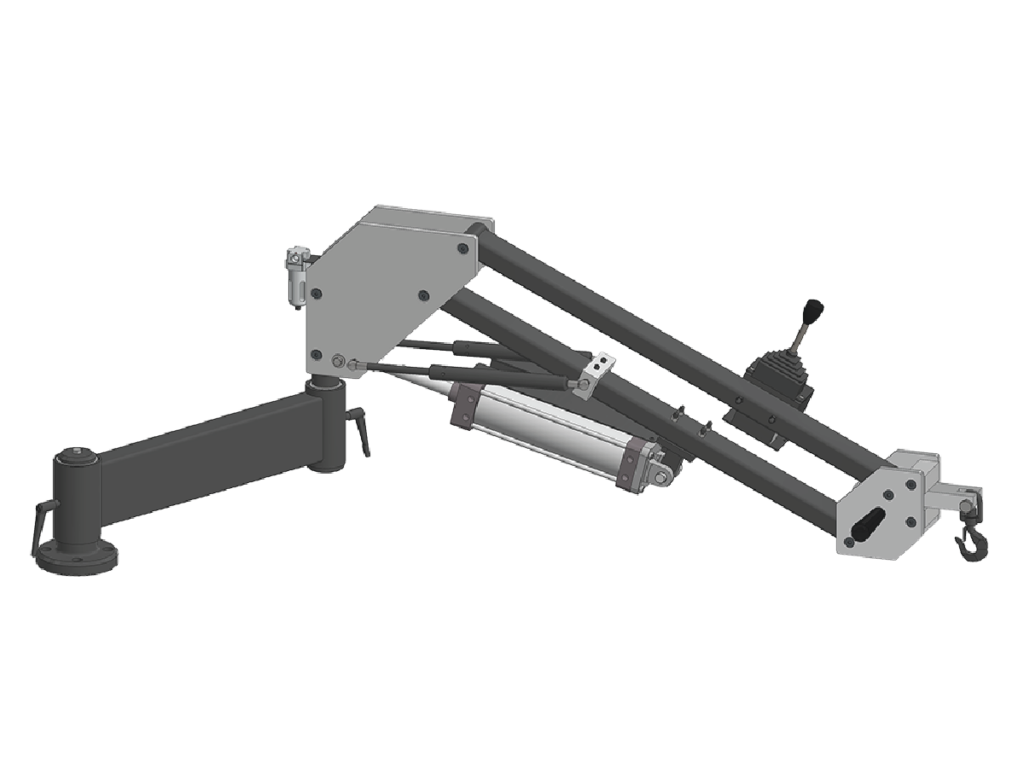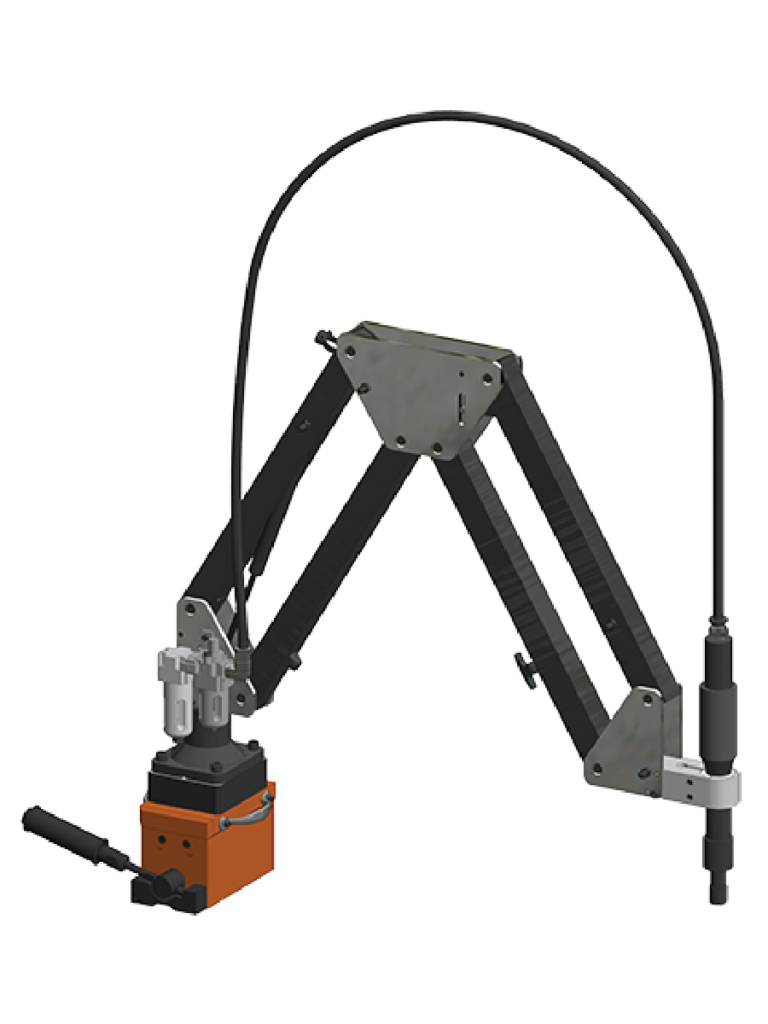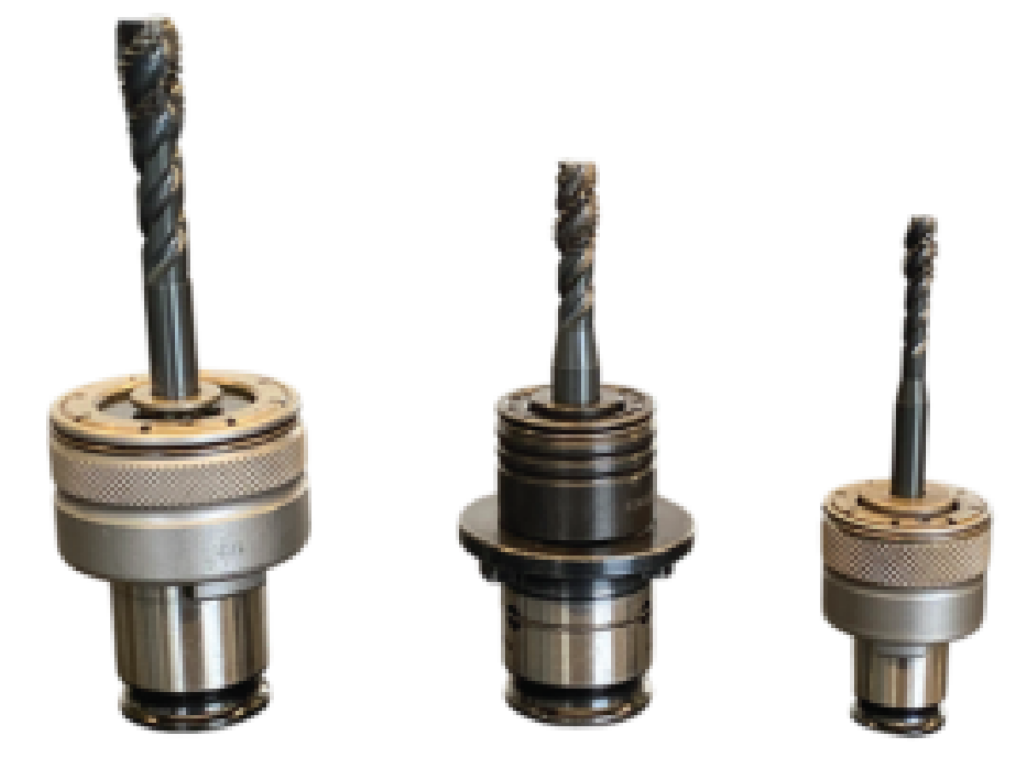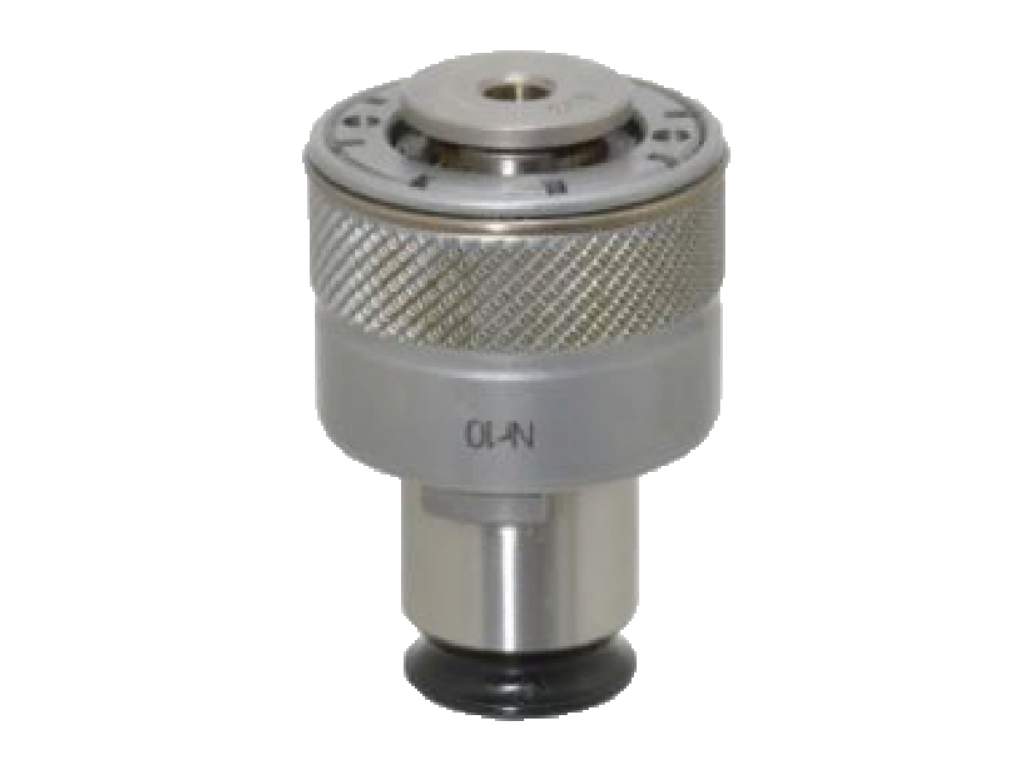The FlexCNC is a vertical machining center offered by Flex Machine Tools. Below are five of the many features that set this machine apart from other vertical machining centers.
1) Zero Weight Restrictions
Operators rely on the table for part mobility on a standard vertical machining center, limiting the maximum table load. On a FlexCNC, however, the spindle moves instead of the bed. This allows operators to work with materials or parts of any weight or size.
2) Open Bed for Easy Loading and Unloading
Traditional vertical machining centers require the operator to reach into the machine to load and unload parts. The open bed on the FlexCNC makes loading as simple as bringing the part over to the top of the machine and setting it down. Heavy parts are quickly loaded and unloaded with a crane or forklift.
3) Large Customizable Bed Sizes
The FlexCNC ranges in size from 10 ft to 50 ft. In addition to the standard sizes, we can also build custom sizes to fit your machining needs.
4) Pendulum Mode
Pendulum mode allows more than one part to run at a time. While the machine runs on one end, the operator can be on the other, refixturing the next part. This process allows the machine never to stop running and eliminates downtime for the operator. The laser scanners also prevent operator injury by slowing down the gantry or stopping in altogether when someone gets too close.
5) State of the Art Controller
The motion control system on the FlexCNC is the most state of the art controller available, giving the user the capability and flexibility for most machining applications, big and small. The FlexCNC controller is easy to use and is comparable to standard commercially available controllers like the Fanic31i
For more information on the FlexCNC Vertical Machining Center and its features, visit https://flexmachinetools.com/flexcnc/.


